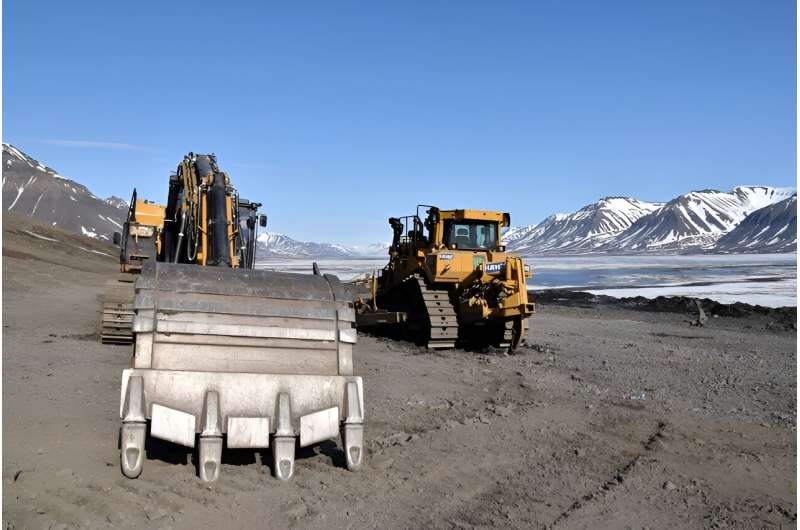This article has been reviewed according to Science X's editorial process and policies. Editors have highlighted the following attributes while ensuring the content's credibility:
fact-checked
proofread
Restoring mining landscapes in the High Arctic

NINA researchers have played a central role in restoring old mining landscapes in Svalbard, Norway. As of 2024, the restoration is complete.
The Svea coal mines permanently closed for operation in 2015. At the same time landscape restoration of the mining settlement and infrastructure, stretching more than 20 km from the sea up to 700 meters above sea level, was initiated to re-establish the natural processes in the area.
Enabling both dynamic ecological and geomorphological processes was the focus of the landscape restoration, when remnants of the old mining activity that once dominated the area, such as roads, housing, industrial facilities, landfills, and quarries, were all removed.
"Tackling a more than hundred-year-old coal mine at 77° North gave us invaluable knowledge in restoring active geological processes and slow biological processes in extreme environments," says Dagmar Hagen, senior researcher at The Norwegian Institute for Nature Research.
Fast and slow nature in the High Arctic
Where vegetation cover in Svalbard is sparse and slow-growing, the geological processes, such as glacial, slope, fluvial and coastal, are in contrast highly active. Facilitating geodiversity has in this case meant appropriate consideration of biodiversity, as the abiotic conditions support a mosaic of vegetation cover and habitats as well as landscape character.
In fact, when targeting the reconstruction and design of post-mining landscapes, there is a risk of neglecting the dynamic geomorphological processes, Hagen says. Rather than designing a new landscape, we argue that preparing the future landscape for active geological processes will align with the overall ideas of nature restoration, she continues.
In High Arctic regions with sparse vegetation and slow biotic processes, and where geological and geomorphological forces dominate, facilitating these dynamic processes will especially be relevant.
Multidisciplinary: From bulldozer operators to project owner
A multidisciplinary approach in planning such large-scale restoration in the High Arctic was crucial to understand relations between ecological and geomorphological processes, and to propose the best possible solutions. Placing geomorphology, botany, and landscape knowledge at the core, cultural heritage, and pollution management were also closely connected.
Further, the extensive restoration effort at Svea required a consensus on restoration principles among all participants from project leaders to all personnel working on the ground. To foster a common understanding, all personnel participated in "green training," gaining insights into the landscape, geodiversity, biodiversity, and restoration principles.
Ultimately, the people operating excavators, bulldozers, and dump trucks carry out the restoration work and shape the new landscape, and a significant portion of the positive results should be attributed to their efforts, Hagen states.
"We believe that the success of a restoration project of this size depends on a multidisciplinary approach, including all aspects of the management of the mine's interior, pollution, cultural heritage, and natural diversity," Dagmar Hagen concludes.
Details of the project are published in the journal Geoheritage.
More information: Lars Erikstad et al, Working with Natural Processes: Restoring a Mining Landscape in the High Arctic, Svalbard, Norway, Geoheritage (2023). DOI: 10.1007/s12371-023-00855-4
Provided by Norwegian Institute for Nature Research




















